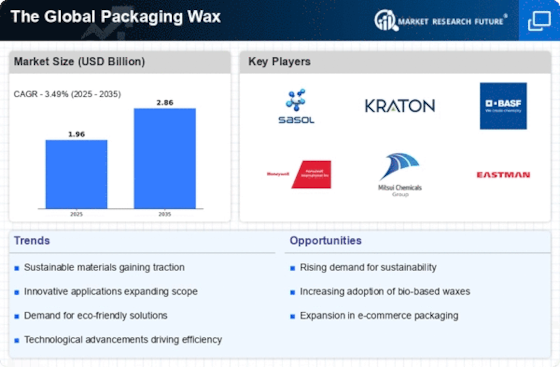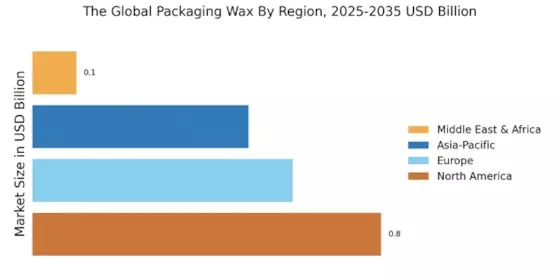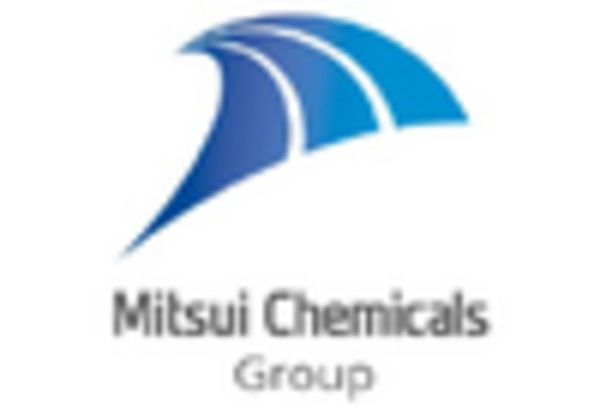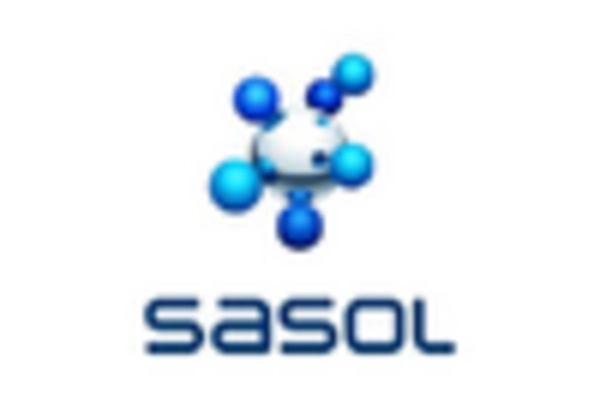E-commerce Growth
The rapid expansion of e-commerce is significantly influencing the Packaging Wax Market. As online shopping continues to gain traction, the demand for effective packaging solutions that ensure product safety during transit is paramount. In 2025, e-commerce sales are expected to surpass USD 6 trillion globally, necessitating innovative packaging materials that can withstand shipping challenges. Packaging wax plays a crucial role in enhancing the durability and aesthetic appeal of products, making it an attractive option for e-commerce businesses. Additionally, the rise of subscription services and direct-to-consumer models is likely to further drive the need for customized packaging solutions, thereby creating new opportunities within the Packaging Wax Market. Companies that can adapt to these evolving demands may find themselves at a competitive advantage.
Consumer Preferences
Shifting consumer preferences are a critical driver for the Packaging Wax Market. As consumers increasingly prioritize quality and aesthetics in product packaging, the demand for premium packaging solutions is on the rise. This trend is particularly evident in sectors such as food and cosmetics, where packaging plays a vital role in brand perception. In 2025, the premium packaging market is anticipated to reach USD 300 billion, indicating a substantial opportunity for packaging wax manufacturers. The ability of waxes to provide a luxurious finish and enhance product visibility makes them an appealing choice for brands aiming to differentiate themselves in a crowded marketplace. Consequently, the Packaging Wax Market is likely to experience growth as companies respond to these evolving consumer demands.
Regulatory Compliance
Regulatory compliance is increasingly shaping the Packaging Wax Market, as governments worldwide implement stricter guidelines regarding packaging materials. These regulations often focus on safety, environmental impact, and recyclability, compelling manufacturers to adapt their offerings accordingly. In 2025, it is estimated that compliance-related costs could account for up to 10% of total packaging expenses, underscoring the importance of aligning with regulatory standards. Packaging waxes that meet these criteria are likely to see heightened demand, as companies strive to avoid penalties and enhance their market reputation. Moreover, adherence to regulations can serve as a competitive differentiator, positioning brands favorably in the eyes of consumers. As such, the Packaging Wax Market must navigate this complex landscape to capitalize on opportunities while ensuring compliance.
Technological Innovations
Technological advancements are reshaping the Packaging Wax Market, leading to the development of more efficient and versatile products. Innovations in wax formulations and application techniques are enhancing the performance characteristics of packaging waxes, such as moisture resistance and barrier properties. In 2025, the market for advanced packaging materials is projected to grow at a CAGR of 5%, driven by these technological improvements. Furthermore, automation in the production processes is likely to reduce costs and increase output, making packaging waxes more accessible to a broader range of industries. As manufacturers continue to invest in research and development, the Packaging Wax Market is expected to witness the introduction of novel products that cater to specific market needs, thereby fostering growth and diversification.
Sustainability Initiatives
The increasing emphasis on sustainability is a pivotal driver for the Packaging Wax Market. As consumers become more environmentally conscious, companies are compelled to adopt eco-friendly packaging solutions. This shift is evident in the rising demand for natural waxes, such as beeswax and plant-based alternatives, which are perceived as more sustainable compared to synthetic options. In 2025, the market for sustainable packaging is projected to reach USD 500 billion, indicating a robust growth trajectory. The Packaging Wax Market is likely to benefit from this trend, as manufacturers seek to align their products with consumer preferences for biodegradable and recyclable materials. Furthermore, regulatory frameworks are increasingly favoring sustainable practices, which may further propel the adoption of eco-friendly packaging wax solutions.



















Leave a Comment